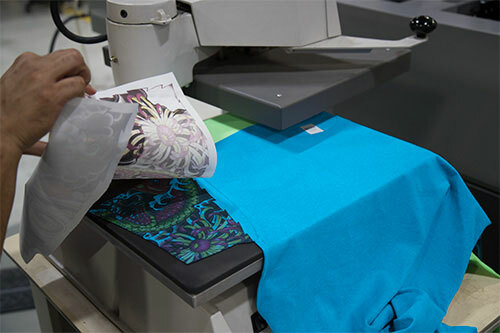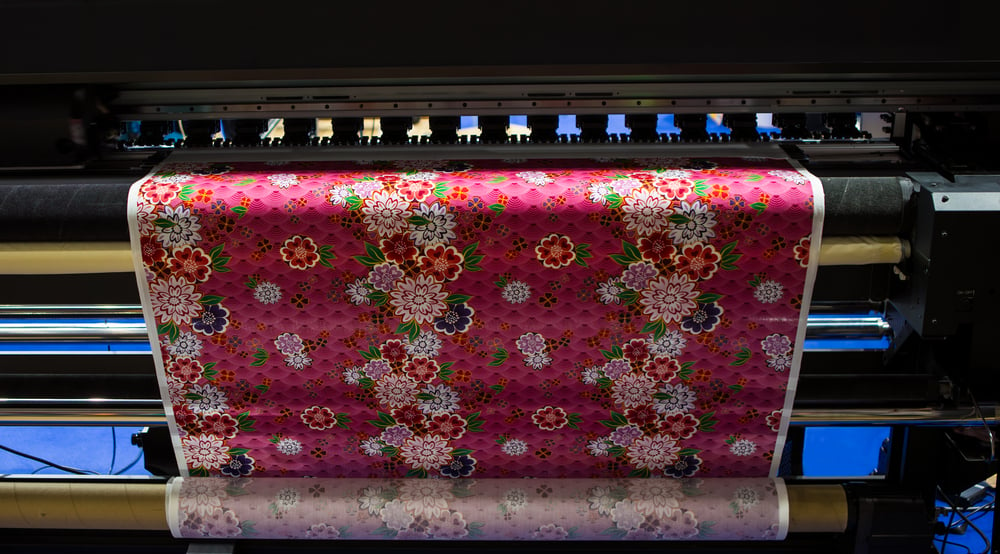Checking out the Advantages of Sublimation Printing for High-Quality Fabrics
Checking out the Advantages of Sublimation Printing for High-Quality Fabrics
Blog Article
From Conventional to Digital: Understanding the Development of Towel Printing
The improvement of cloth printing from traditional techniques like block printing and stand up to dyeing to contemporary methods such as screen and electronic printing marks a substantial shift in the fabric industry. Typical approaches, soaked in artisanal workmanship and social significance, have gradually given method to electronic innovations that use unmatched accuracy, performance, and customization. This change not just enhances manufacturing abilities but likewise aligns with growing demands for sustainable practices. Yet, just how do these developments impact the essence of fabric printing, and what might the future hold for this ever-evolving craft?
Traditional Cloth Printing Approaches
In the very early stages of textile production, traditional cloth printing approaches served as the foundation of material design, supplying both capability and creative expression. Block printing, one of the oldest approaches, involved carving intricate designs into wooden blocks, which were then dipped in color and pushed onto material.
Resist dyeing, consisting of methods like batik and tie-dye, employed wax or other materials to avoid color from permeating particular locations of the textile. This method produced striking contrasts and detailed designs, usually imbued with cultural importance. Stenciling, one more standard method, included cutting patterns into a material and applying color with the openings, using a simpler yet efficient means to create repeated designs.
These standard methods not only shaped the textile industry's early advancement however additionally prepared for future developments. Each strategy showed the local and social attributes of its origin, preserving and distributing artisanal knowledge through generations.
The Surge of Display Printing
How did screen printing transform the landscape of textile design? The introduction of screen printing in the early 20th century marked a considerable departure from conventional techniques, using extraordinary convenience and efficiency. This strategy entails pressing ink with a fine mesh display that has actually been stenciled with a design, allowing for high precision and uniformity. Display printing made it possible for developers to create elaborate patterns and vibrant shades on textiles, which were formerly challenging to attain with block printing or hand-painting approaches.
One of the key advantages of display printing is its ability to replicate intricate layouts on a big scale with remarkable integrity. This scalability made it exceptionally prominent in the commercial fabric sector, where automation without giving up top quality is vital. Display printing fits a vast array of dyes and inks, increasing the palette of textures and surfaces readily available to designers.
Furthermore, the process is highly versatile, appropriate for different fabric kinds consisting of cotton, silk, and synthetics. This flexibility, integrated with its cost-efficiency for huge runs, strengthened screen printing's function as a foundation of modern-day textile manufacturing. Thus, the increase of display printing revolutionized the industry, pushing the limits of what was feasible in fabric layout.

The Development of Digital Printing
Structure on the remarkable improvements brought by display printing, the textile market experienced an additional groundbreaking development with the development of electronic printing. Emerging in the late 20th century, electronic printing reinvented the way styles are moved onto textiles, providing unmatched flexibility and effectiveness. Unlike typical methods, which typically called for substantial configuration and considerable hand-operated treatment, digital printing utilizes computer-aided layout (CAD) technology to generate complex patterns straight onto the fabric with high precision.
This technology has actually allowed fabric producers to satisfy the growing need for modification and on-demand manufacturing. By eliminating the need for displays and plates, digital printing minimizes and reduces lead times product waste, making it an extra lasting alternative. The ability to publish complicated pictures and a wide variety of colors in a solitary pass has actually opened brand-new imaginative avenues for designers, cultivating a rise in creative expression within the market.
Furthermore, electronic printing supports smaller sized set production runs, which is particularly advantageous for particular niche markets and startup style brands. This technological jump has not only boosted operational effectiveness but additionally equalized accessibility to high-grade fabric printing, setting the phase for future developments in fabric layout and manufacturing.
Comparing Strategies: Conventional Vs. Digital
While both digital and standard printing methods have their very own distinct benefits, they differ considerably in terms of procedure, effectiveness, and environmental impact. Standard towel printing, including methods like block printing and display printing, includes manual work and detailed workmanship. These techniques are commemorated for their capability to generate lively shades and abundant textures, frequently leading to special, artisan-quality items. They are labor-intensive, time-consuming, and usually restricted in terms of color variety and design intricacy.
In contrast, electronic printing uses sophisticated technology to move designs directly onto textile using inkjet printers. Digital printing is considerably quicker, allowing for fast turnarounds and just-in-time manufacturing, which decreases the need for big inventory storage space.
From an environmental viewpoint, Learn More Here digital printing is usually a lot more sustainable. It makes use of less water and produces marginal waste contrasted to conventional methods, which frequently involve extensive washing and coloring processes. Subsequently, digital printing is significantly favored in a period where environmental factors to consider are vital.
Future Trends in Towel Printing
As the fabric market remains to develop, future trends in cloth printing regularly aim towards better integration of modern technology and sustainability. One considerable pattern is the enhanced application of electronic printing innovations. These advancements permit higher precision, much faster production times, and the capacity to produce complicated styles that were once tough with conventional approaches. Digital textile printing is expected to control the market, driven by its performance and versatility to consumer demands for individualized and limited-edition items.

In addition, the consolidation of wise textiles, which incorporate electronic parts into textiles, is readied to revolutionize the marketplace. These fabrics can provide extra capabilities such as temperature law, wellness surveillance, and interactive functions. As modern technology remains to advance, the crossway of electronic printing and wise fabrics will certainly open up brand-new avenues for imaginative and practical applications in fabric printing.
Conclusion
The advancement of fabric printing from standard approaches to electronic advancements marks a substantial change in the textile market. While traditional techniques highlight artisanal workmanship and social heritage, electronic printing provides unrivaled precision, performance, and customization. This shift not only improves manufacturing capabilities but likewise supports sustainability efforts. Future fads are most likely to continue integrating innovative innovations, better redefining textile style and manufacturing procedures to meet modern needs and ecological factors to consider (sublimation printing).
The change of towel printing from conventional methods like block printing and withstand dyeing to modern methods such as display and digital printing marks a substantial shift in the fabric sector. Screen printing enabled designers to generate complex patterns and dynamic colors on textiles, which were formerly challenging to attain with block printing or hand-painting techniques.
Building on the impressive innovations brought by screen printing, the fabric industry experienced an additional groundbreaking advancement with the introduction of electronic printing. screen printing. Conventional towel printing, including techniques like block printing and display printing, involves hand-operated labor and elaborate craftsmanship. As modern technology continues to advance, the junction of digital printing and smart fabrics will certainly open brand-new opportunities for web creative and useful applications in cloth check over here printing
Report this page